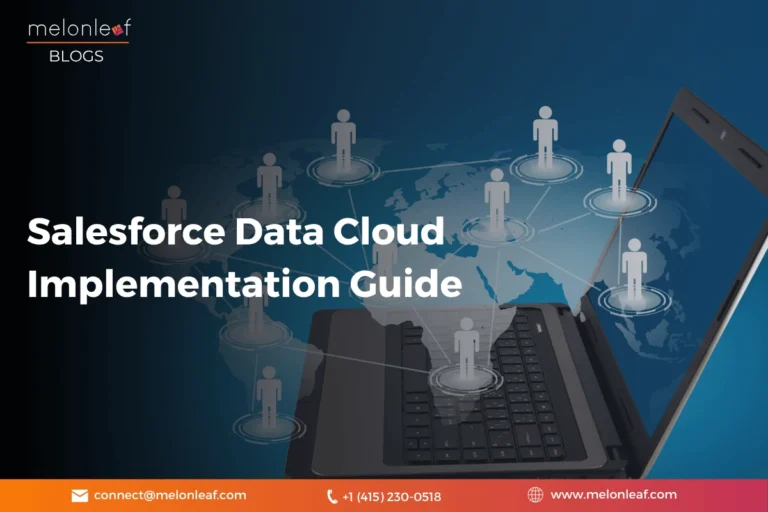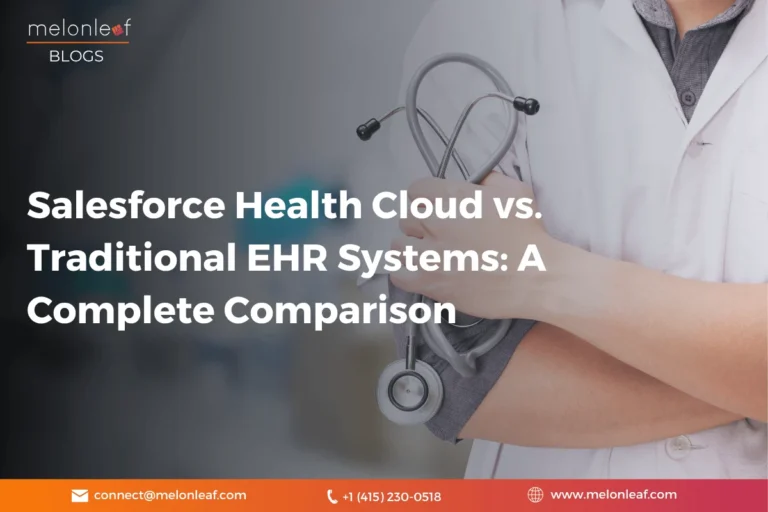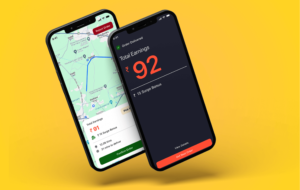The world of B2B eCommerce is changing fast. What used to be a slow, relationship-driven, offline process is now transforming into an agile, tech-driven, digital-first experience. If you’re running a B2B business, you’ve probably already noticed that your customers want the same convenience they get in their shopping, that is fast responses, transparent pricing, and self-service options.
But here’s the thing: keeping up with these changes isn’t just about offering an online catalog. It’s about understanding what’s driving this transformation, tackling the challenges head-on, and preparing for the trends that will shape B2B eCommerce in 2025 and beyond.
Let’s dive into what’s changing, what’s holding businesses back, and what trends you need to watch out for.
The future of B2B eCommerce: What’s driving the change?
B2B eCommerce is no longer just about having an online catalog. Several key forces are driving businesses toward digital transformation:
- Evolving Buyer Expectations: 94% of B2B buyers research online before engaging with a vendor. They expect real-time pricing, personalized recommendations, and instant self-service portals.
- AI-Driven Automation: AI-powered platforms handle demand forecasting, automated inventory restocking, and intelligent product recommendations, reducing human intervention.
- Integration of Digital Marketplaces: Businesses are shifting towards B2B marketplaces, offering real-time quotes, AI-based negotiations, and automated procurement workflows.
- Supply Chain Disruptions: Companies need real-time tracking, predictive analytics, and blockchain-led transparency to navigate uncertain supply chains.
- Composable & Headless Commerce Architectures: Businesses are moving away from monolithic eCommerce solutions to modular, API-first architectures that offer agility, customization, and omnichannel experiences.
Key Challenges in B2B eCommerce & How to Overcome Them
Despite rapid adoption, businesses still face significant roadblocks:
1. Legacy System Integrations
Problem: Most businesses operate on ERP-heavy architectures with siloed data and outdated interfaces.
Solution: Adopting API-driven commerce platforms like Salesforce B2B Commerce Cloud that helps with smooth ERP, CRM, and PIM integrations.
2. Complex Pricing & Customization
Problem: B2B transactions involve volume discounts, contract-based pricing, and tiered rates, making manual calculations inefficient.
Solution: AI-powered CPQ (Configure, Price, Quote) solutions automate pricing, reducing errors and negotiation cycles.
3. Lengthy Sales Cycles
Problem: The traditional B2B buying process involves multiple approvals, negotiations, and purchase orders.
Solution: Self-service portals with AI-based contract automation provide faster deal closures.
Top B2B eCommerce Trends in 2025
The B2B eCommerce landscape is rapidly evolving, driven by technological advancements and changing buyer expectations. To stay competitive, businesses must adapt to emerging trends that are reshaping the industry. Here are the top trends anticipated to define B2B eCommerce in 2025:
1. AI-Driven Personalization
Artificial Intelligence (AI) and Machine Learning (ML) are revolutionizing B2B eCommerce by giving personalized experiences. AI algorithms analyze vast datasets to understand buyer behavior, preferences, and purchasing patterns. This analysis facilitates the delivery of customized product recommendations, dynamic pricing strategies, and customized content, improving user engagement and conversion rates. For example, AI can predict a buyer’s needs based on previous interactions and suggest relevant products or services, making convenient the purchasing process.
2. Headless Commerce Architecture
Headless commerce decouples the front-end presentation layer from the back-end eCommerce infrastructure. This separation allows businesses to deliver content across various channels, websites, mobile apps, and IoT devices using APIs. The flexibility of headless architecture offers rapid integration with emerging technologies and provides a consistent user experience across platforms. For example, a company can update its product catalog in the back-end without disrupting the user interface, taking care of operations.
3. Expansion of B2B Marketplaces
B2B marketplaces are becoming central hubs for business transactions. They offer a platform where multiple vendors can showcase their products or services, allowing buyers to compare offerings easily. These marketplaces often incorporate advanced features like AI-driven search, automated procurement processes, and integration with enterprise resource planning (ERP) systems, improving efficiency and transparency in B2B transactions.
4. Subscription-Based Business Models
The subscription model is gaining traction in B2B eCommerce, providing predictable revenue streams and fostering long-term customer relationships. Businesses offer products or services on a subscription basis, delivering continuous engagement. This model often includes features like automated billing, personalized subscription plans, and AI-driven usage analytics to personalize offerings to individual customer needs.
5. Integration of Augmented Reality (AR) and Virtual Reality (VR)
AR and VR technologies are transforming the B2B buying experience by offering immersive product demonstrations and virtual walkthroughs. For example, AR can make buyers visualize how machinery fits into their production line, while VR can provide virtual training sessions for complex equipment. These technologies reduce the need for physical prototypes and on-site visits, accelerating the decision-making process.
6. Emphasis on Sustainability and Ethical Practices
Sustainability is becoming a critical factor in B2B transactions. Companies are adopting eco-friendly practices, such as sourcing sustainable materials and reducing carbon footprints, to meet regulatory requirements and customer expectations. Technologies like blockchain are used to provide transparency in supply chains, allowing buyers to verify the ethical sourcing of products.
7. Mobile Optimization and Progressive Web Apps (PWAs)
With the increasing reliance on mobile devices, optimizing B2B eCommerce platforms for mobile access is essential. Progressive Web Apps combine the best features of web and mobile applications, offering fast loading times, offline capabilities, and push notifications. This makes sure that buyers have a smooth experience regardless of the device they use.
8. Voice Commerce Adoption
Voice-activated technologies are simplifying the B2B purchasing process. Voice assistants provide hands-free searches, order placements, and customer support interactions. For example, procurement managers can reorder supplies by simply speaking to a voice-enabled device, with effective operations while saving time.
9. Blockchain for Transparency and Security
Blockchain technology improves transparency, security, and efficiency in B2B transactions. It provides immutable records of transactions, making sure of data integrity and reducing fraud. Smart contracts, like self-executing contracts with the terms directly written into code, automate agreements, reducing the need for intermediaries and for a better transaction process.
10. Hyper-Personalization Strategies
Beyond standard personalization, hyper-personalization uses advanced data analytics to deliver individualized experiences. By analyzing real-time data, businesses can offer content, products, and services customized to each user’s specific needs and preferences. This approach increases engagement and fosters stronger customer relationships.
11. Omnichannel Integration
An omnichannel approach makes sure of an effective customer experience across all touchpoints, online and offline. Integrating various channels, such as eCommerce platforms, physical stores, and social media, allows customers to interact with a brand consistently. For example, a buyer can research products online, experience them in a virtual showroom, and finalize the purchase through a sales representative, all while maintaining a unified experience.
12. Advanced Data Analytics and Business Intelligence
Leveraging advanced data analytics and business intelligence tools helps companies to make data-driven decisions. By analyzing customer behavior, market trends, and operational metrics, businesses can optimize their strategies, improve efficiency, and identify new opportunities. Predictive analytics can forecast demand, helping in inventory management and reducing stockouts or overstock situations.
13. Cybersecurity Measures
As digital transactions increase, so do cybersecurity threats. Implementing strong cybersecurity measures is crucial to protecting sensitive data and maintaining trust. This includes using encryption, multi-factor authentication, and regular security audits to safeguard against breaches and promise compliance with regulations.
14. Integration of the Internet of Things (IoT)
IoT devices are improving B2B operations by providing real-time data and automation capabilities. For example, IoT sensors can monitor equipment health, triggering automatic maintenance requests when anomalies are detected. In inventory management, IoT-enabled shelves can track stock levels and automatically reorder products when they run low, optimizing supply chain efficiency.
15. AI-Powered Chatbots and Virtual Assistants
AI-powered chatbots and virtual assistants are improving customer service by providing instant responses to inquiries, guiding users through purchasing processes, and offering post-purchase support. These tools use natural language processing to understand and respond to customer queries, improving user experience and reducing the workload on human support teams.
16. Dynamic Pricing Strategies
B2B eCommerce is increasingly adopting dynamic pricing models powered by AI and data analytics. Unlike traditional static pricing, dynamic pricing adjusts rates in real time based on demand, competitor pricing, order volume, and customer behavior. For example, a bulk buyer may receive automated discounts, whereas a customer in a high-demand region may see price adjustments. By implementing AI-driven pricing engines, businesses can optimize profitability while maintaining competitive pricing structures.
17. ERP and CRM Integration for Seamless Operations
Enterprise Resource Planning (ERP) and Customer Relationship Management (CRM) systems are essential for modern B2B e-commerce operations. Integrating these systems provides a unified view of customer interactions, inventory levels, order processing, and financial data. For example, Salesforce CRM integration allows businesses to track customer touchpoints across various channels while automatically syncing with ERP platforms to manage stock and fulfill orders efficiently. This eliminates manual data entry, reduces errors, and improves overall operational efficiency.
18. Self-Service Portals and Automated Procurement
B2B buyers expect the same convenience as B2C shoppers, leading to the rise of self-service portals. These platforms allow customers to place orders, track shipments, manage invoices, and access support without human intervention. AI-powered automated procurement systems further simplify bulk ordering and contract negotiations. Businesses implementing self-service portals integrated with AI-driven procurement tools are reducing manual workload while improving the customer experience.
Wrapping Up,
B2B eCommerce in 2025 is set to be more advanced, customer-centric, and data-driven than ever before. Businesses that embrace AI, automation, personalization, and security advancements will lead the market. As technology continues to reshape B2B transactions, companies must stay ahead by adopting these trends to optimize operations, improve customer engagement, and drive revenue growth. At Melonleaf Consulting, we specialize in helping businesses implement these emerging trends through customized Salesforce solutions. Whether it’s AI-driven personalization, ERP-CRM integration, or advanced analytics, our team of Salesforce Experts makes sure that your business is future-ready. Want to discuss how these trends can impact your business? Contact us today to explore solutions.












